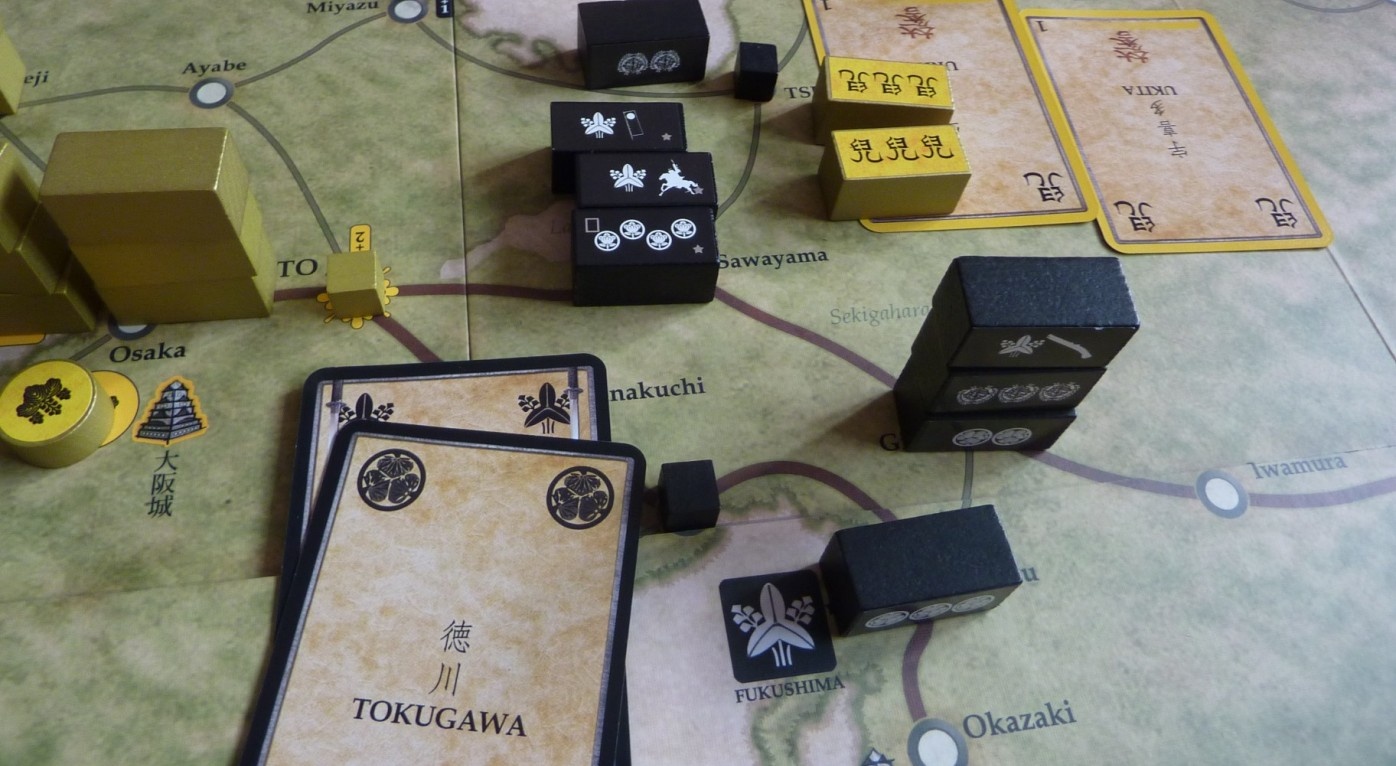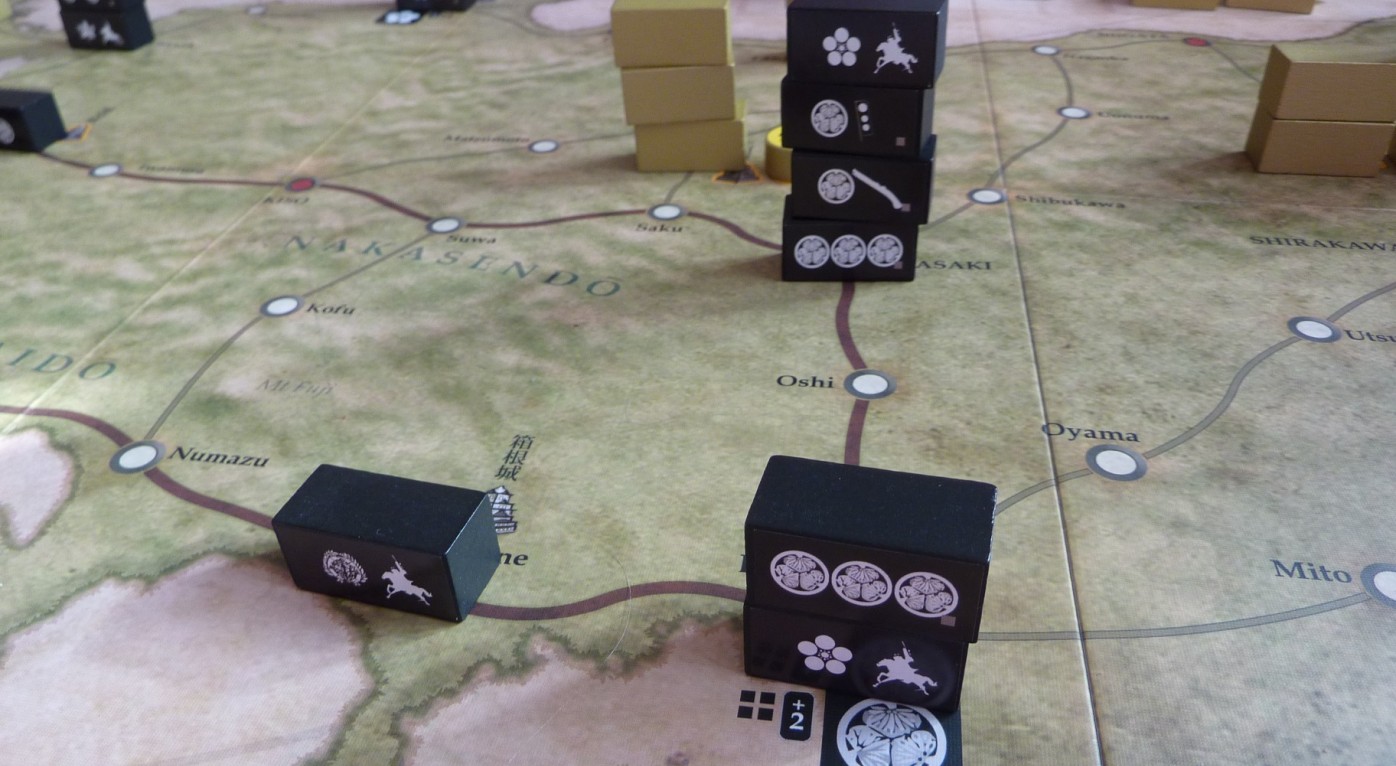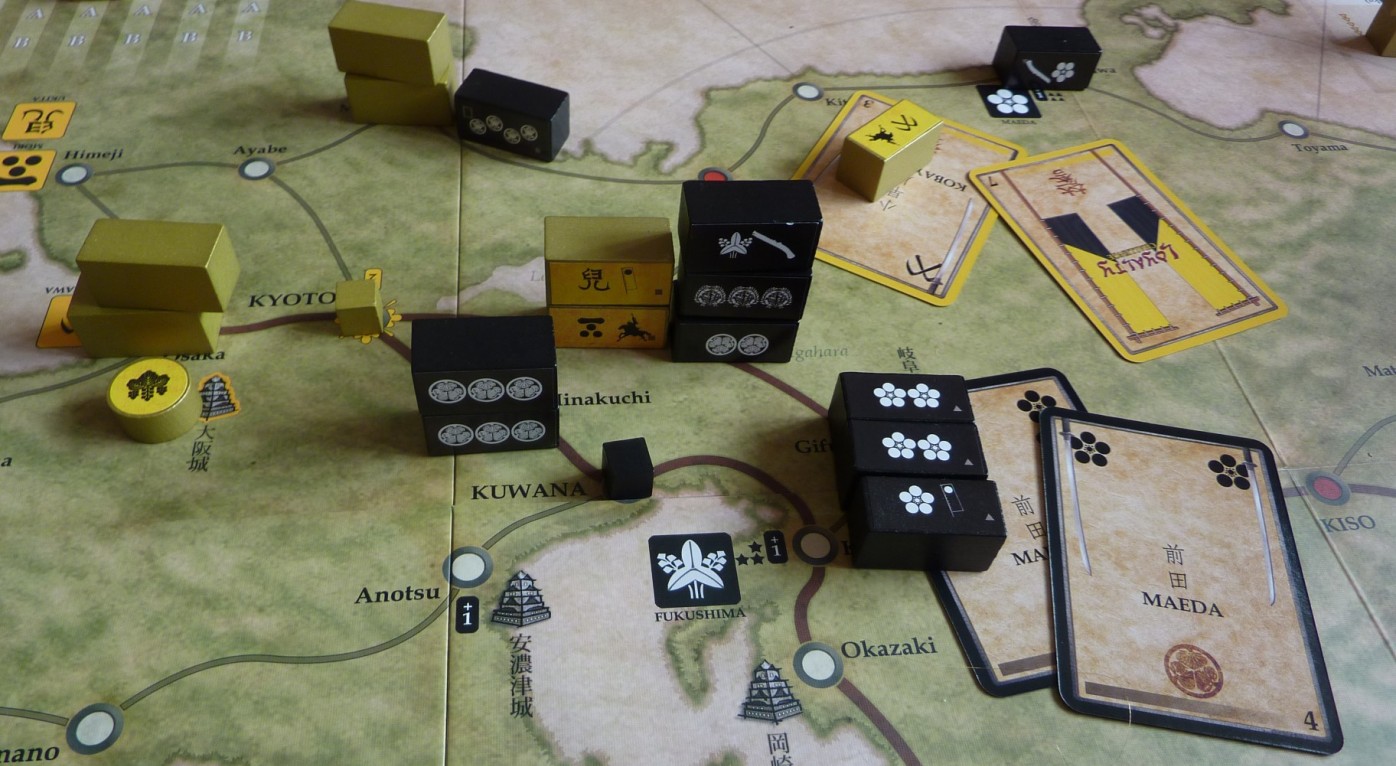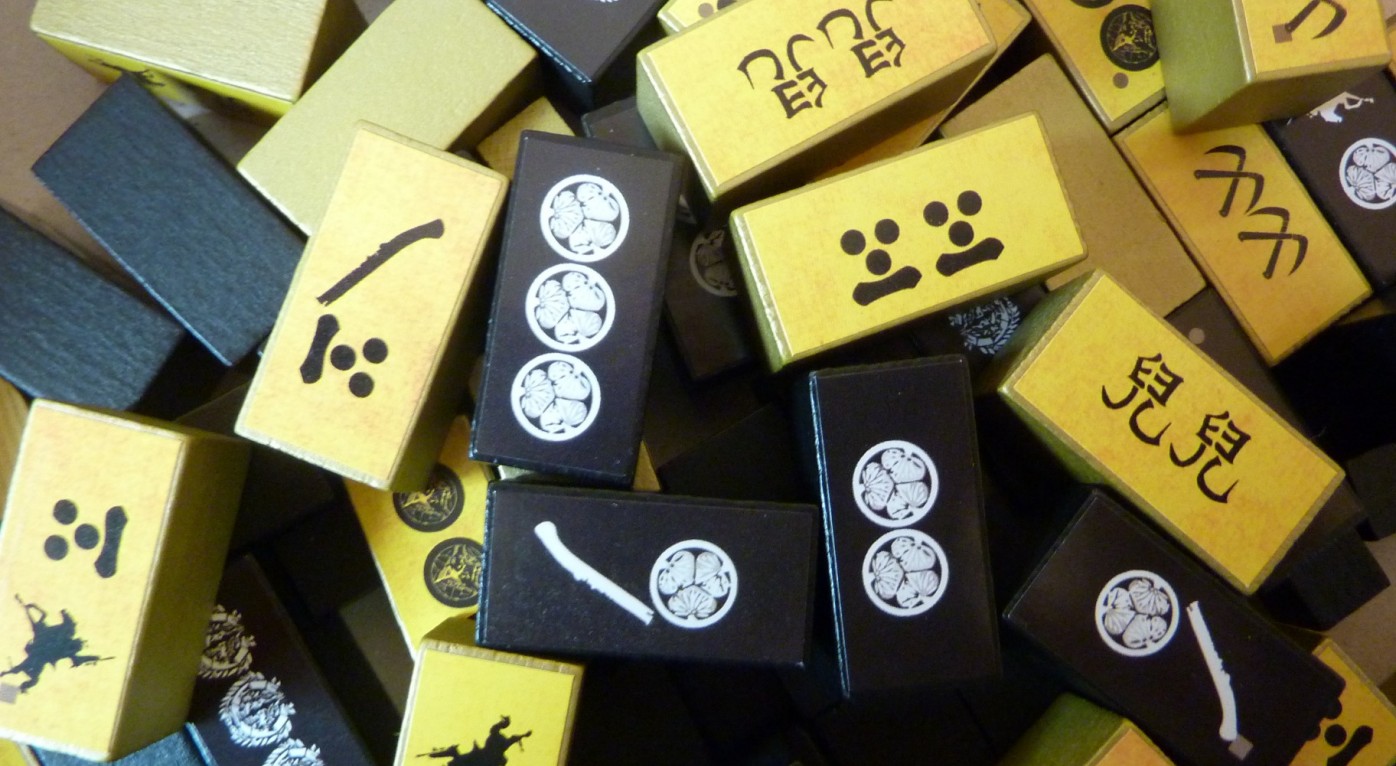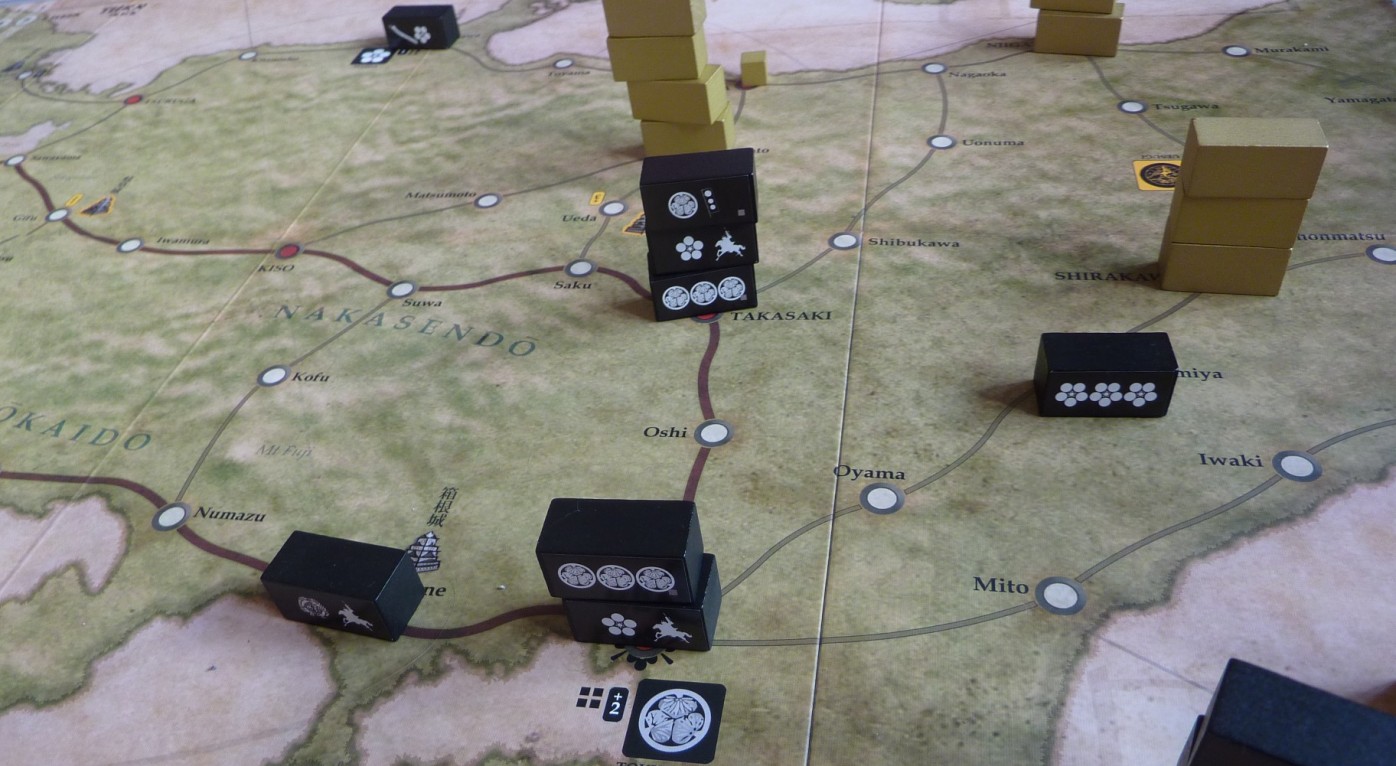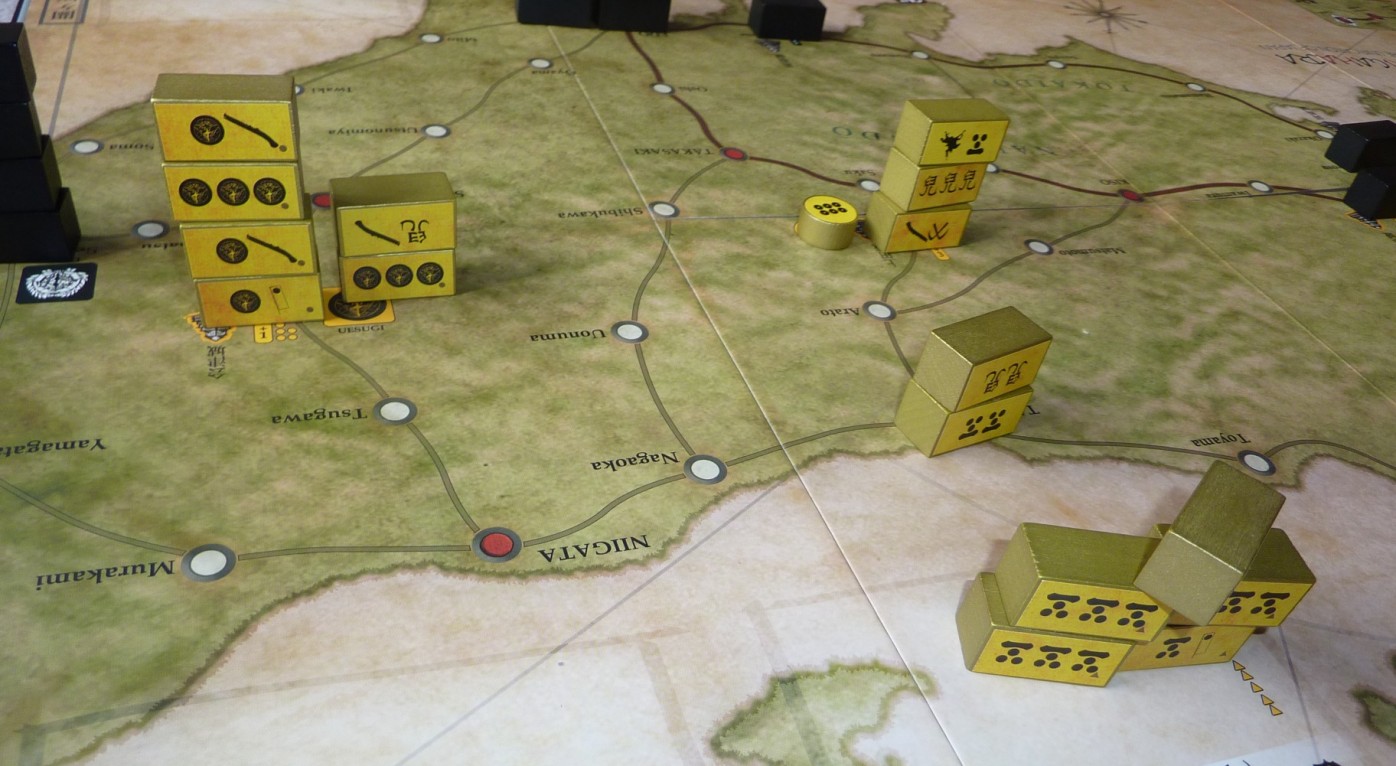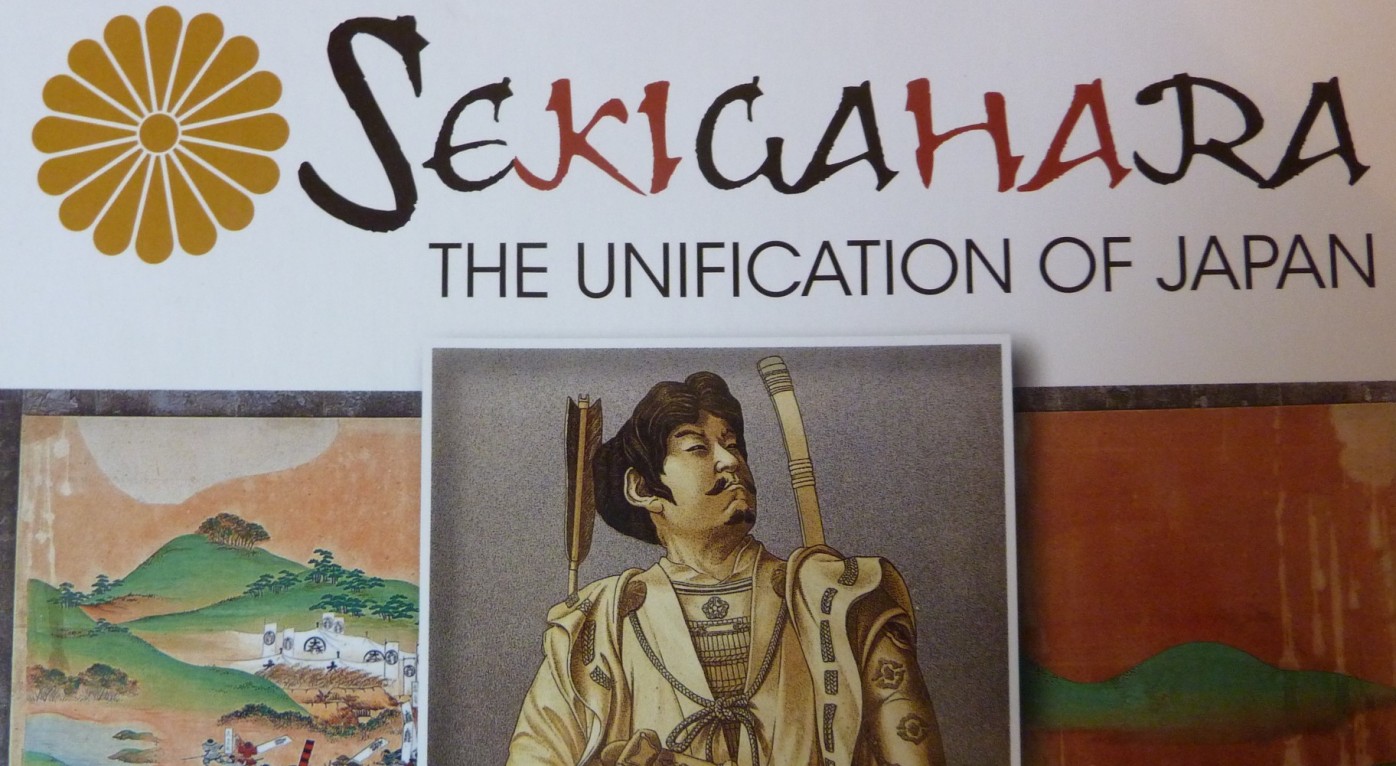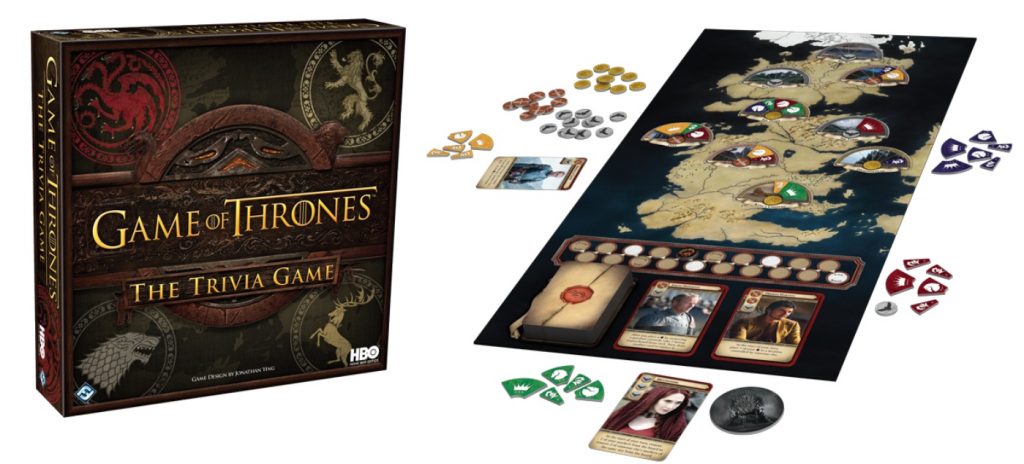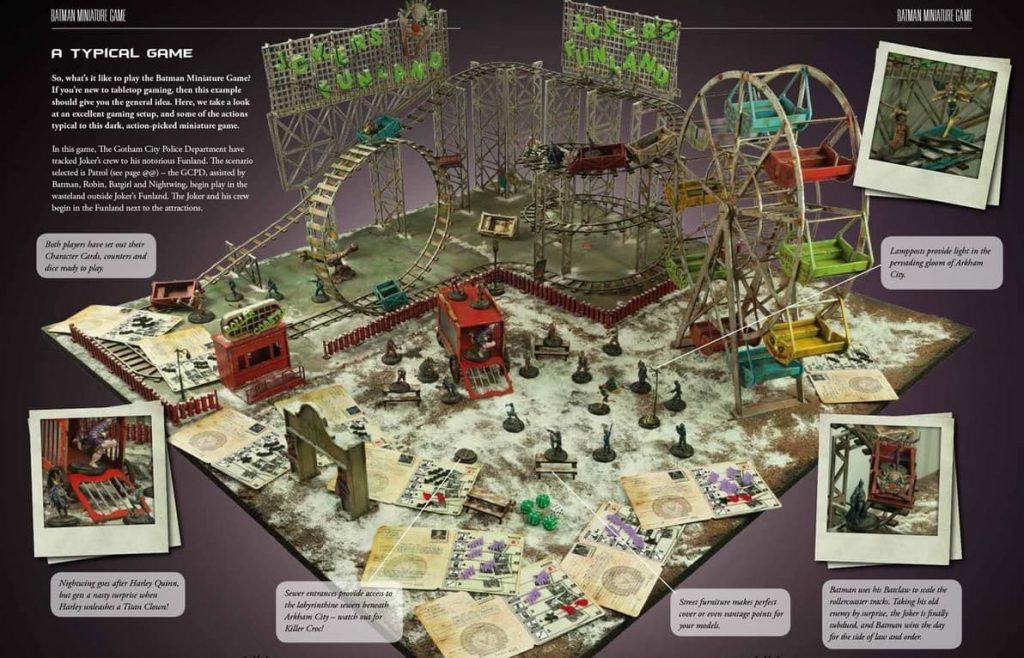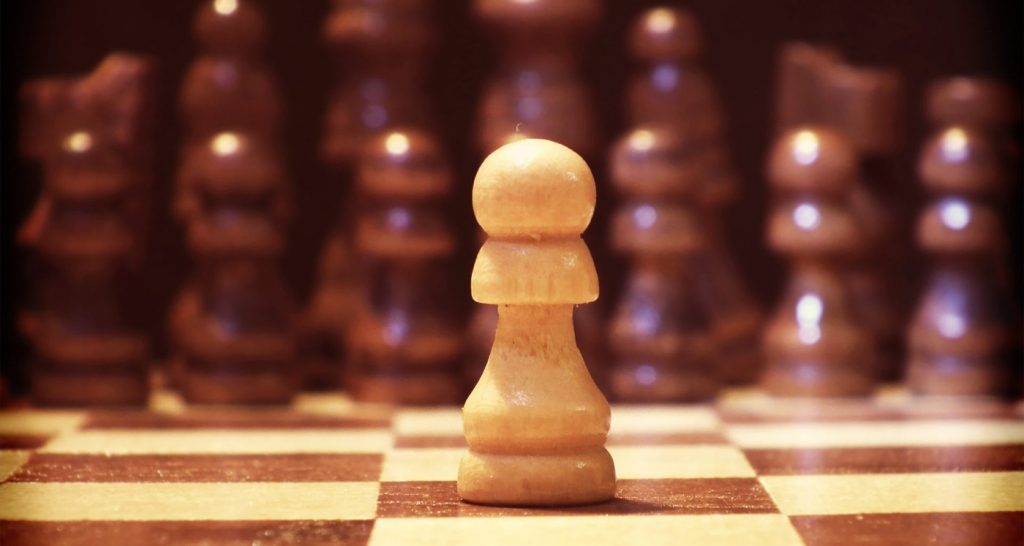Paul: Matt, of all the things I might expect to find in the center of your house, a tranquil Japanese water garden wasn’t high on the list.
Thrower: An old, silent pond. A frog jumps into the pond. Splash! Silence again.
Paul: What? Where? I don’t see any frogs. I hate frogs. I had an experience once as a child where, in my shorts, I f-
Thrower: It’s a haiku, you great galumphing gajin. This is my garden of tranquility where I retreat occasionally, from the furious violence of my day-to-day life, to meditate. Some people find peace and focus in the ancient game of Go. But personally I find it intensely pointless and profoundly annoying. So instead I’m playing its nearest wargame equivalent, Sekigahara.
Paul: Oh, bless you. Here’s a handkerchief.
Thrower: Sekigahara was the name of the climactic battle, on October 21st 1600, which decided the ruler of feudal Japan. It, and the campaign preceding it, were characterised by issues of honour and loyalty, and they’re reflected beautifully in this game with its bare minimum of rules and it’s almost zen-like simplicity. Look, your units are wooden blocks, which can be turned to hide them from your opponent.
Paul: So they can get a rough idea of your troop distribution, but not their precise strength?
Thrower: Exactly, Grasshopper. There’s a whole group of wargames that use blocks to re-create the fog of war. But Sekigahara is different. You have a hand of cards with symbols that match those on the blocks. In battle, you must play cards which have a matching symbol to a block in the melee in order to get it to fight. Otherwise it will refuse, or even defect to the enemy. A strong-looking army may prove to be as soft as tofu if its commander doesn’t have the right cards. So there are circles of bluff within bluff, like lotus blossom spinning on the water’s surface.
Paul: I remember you saying something about fog-of-war, and block wargames, in another review…
Thrower: Alas, Grasshopper, this is why I am here! My inability to elucidate the mechanical detail of card-driven games has bought dishonour upon Shut Up & Sit Down, so I am meditating to put myself back upon the path toward enlightenment, toward enlightening our readers. As Sun Tzu said, “All War is Deception” and there are few finer games than Sekigahara to demonstrate this. Such is the suspense during battles that a game will likely see your fingernails gnawed to sushi.
Paul: I don’t know. I’m pretty sure I don’t have fish fingers, plus that doesn’t sound much like Go to me.
Thrower: Oh, but it is. I once spoke with a Go master for advice on the way it overwhelms the player with possible decisions, and he said to me that I should play less from the mind and more from the heart. So it is with Sekigahara. There is strategy here; nuances to master and puzzles to consider but always you’re missing half the picture. But time and resources are always short, and both sides need to be aggressive. You must steel your courage, trust your instincts and attack, hoping the loyalty of the enemy troops is suspect.
Paul: Well, okay. But it doesn’t look much like Go either. With all those black and yellow blocks it looks more like a collection of Lego wasps.
Thrower: Look closer. Those blocks are gold, not yellow, the metallic sheen glinting like sun on the edge of a katana. I have never seen such perfectly formed blocks in all my years of gaming, fat and wide for clarity and easy stacking. Black and gold were the colours of the principal clans in the Sekigahara conflict and it’s lucky for us, their antecedents, that they make such a striking contrast. The cards and blocks are decorated in a magisterially minimalist style with Japanese clan symbols: mon.
Paul: Matt, I definitely don’t have any Japanese heritage. My blood goes back to places like Chiswick and Glasgow, though all this talk of blades does remind me of the local knife crime. Ah, memories.
Thrower: Go is also famous for is the richness of play that arises from such simple rules. Sekigahara is not quite so simple, but for a historically detailed game it is incredibly accessible. The meat of the rules is about eight pages of clear, unambiguous instruction and the game can be taught and played to completion in two to three hours. If ever there was a standout candidate for an introductory wargame, Grasshopper, this is it.
Paul: Please stop calling me Grasshopper. It’s making me itchy.
Thrower: This miracle is achieved through a series of clever design decisions. Your hand of cards represents your standing amongst allied clans, your honour and diplomacy. So it makes sense they are used to control both movement and combat. But it’s full of astonishingly subtle inferences. Leaders can be used in battle without a card, for instance, but only if they deploy first. Should you lose, they’re likely to be killed, so it’s a risky tactic. But it models with breath-taking simplicity the heroic Daimyo charging into the fray to set an example to his troops.
Paul: Battles sound exciting! I bet this is one of those games where you get into fights just for the sake of it, right?
Thrower: Be calm, Grasshopper. Focus. Master Sun-Tzu said “What is essential in war is victory, not prolonged operations.” To win, a player must control a majority of castles and other key locations. These are spread across the board, some on highways, others in harder to reach locations, ensuring a variety of possible strategies. You can also win by eliminating the block representing your opponent’s coalition leader. These sudden death victories are not uncommon, and the constant threat of these blocks being discovered and eliminated keeps the game on a knife edge, on a kaiken’s edge.
Paul: Wow, this sounds fantastic. So, is there any reason people shouldn’t play it?
Thrower: Only one. Sekigahara is a lesson in balance. Big stacks of blocks are flexible in combat, but move slowly. To retain a castle troops must be left to garrison it, creating weakness elsewhere. Taking time to organise your blocks and cards ensures power later, but the price is weakness now. However, having a delicately proportioned game necessarily means each individual decision is relatively low stakes. Just as one cannot have the Ying without the Yang, one cannot have both fine balance and singular game-changing moments. Do you understand?
Paul: Well no, not entirely. If you could just…
Thrower: Then I have failed. I have bought shame and dishonour upon Shut Up & Sit Down. The only course left to me is therefore ritual disembowelment with my wakizashi. Farewell, Paul. We will meet again before the throne of the Celestial Emperor.
Paul: WAIT!
Thrower: UUUGH…! Do not… grieve. My… EEEEE…! Spirit will… rise again as… onryo, a… vengeful ghost and… NNNNNNGH…! Wreak vengeance upon my… critics, possibly… OOORRRW…! For some reason… AAAAH…! Involving a… video cassette…
Paul: Oh God, oh god! Matt? Oh… that’s an awful lot of blood and slimy glistening things. I’ve got a sticking plaster in my wallet if that’s any help? Or I could call 999, if my mobile actually got a signal here? Look, Matt, I hear… I feel a chill wind is rising. It’s… er, moaning in the bamboo now. How long have you had all this bamboo in here? Never mind, I don’t imagine you’re going anywhere. I think, um… I think I’ll just go find a payphone? Okay? Back soon!
[very faint and mocking laughter]

